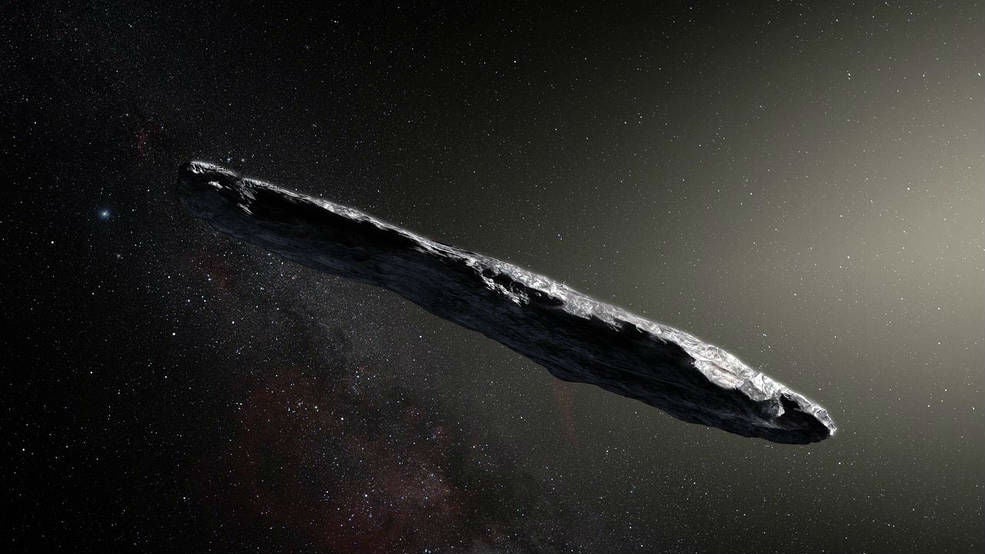An interstellar asteroid could have held life—before it was fried by radiation
Ever since ‘Oumuamua zipped by our planet on Sept. 9, scientists have been trying to learn everything they can about the mysterious asteroid.


Ever since ‘Oumuamua zipped by our planet on Sept. 9, scientists have been trying to learn everything they can about the mysterious asteroid.
The first paper researchers published about it in November concluded that it was the first interstellar object to visit our solar system (at least that we’ve detected). Last week, the first analysis looking for radio signals coming from the asteroid turned up no signs of life, suggesting that ‘Oumuamua really is just a big pink rock shaped like a quarter-mile long grain of rice.
Now, researchers think that the asteroid may have a layer of carbon-filled organic matter on the outside with a layer of frozen versions of gases found on Earth. Still, there’s probably no way life could be lurking there. “I imagine the carbon-rich layer would be inhospitable to life due to the large radiation dose it has received,” Alan Fitzsimmons, an astrophysicist at Queen’s University Belfast in the UK and lead author of the paper published (paywall) in Nature today (Dec. 18), told Quartz via email.
Cosmic radiation given off by things like other galaxies or supernovae has essentially baked the layer of carbon tightly onto the rest of the asteroid’s body, insulating it with the equivalent of a celestial oven spill. This outer layer with a pinkish color likely is likely why ‘Oumuamua never collected dust from its travels in the way comets usually do when they pass by planets like Mercury, which shoots up spouts of gas and other particles. “This surface layer is what happens if you take comet ices and comet dust grains and bake them with high- energy particles for millions or even billions of years,” Fitzsimmons told the Guardian. Based on analysis of the light waves reflected back from the asteroid as well as thermal imaging, the researchers conclude that ’Oumuamua is similar to some of the asteroids that are far out in our own solar system, near Jupiter and Neptune.
The team’s findings also indicate that the middle of the asteroid is frozen methane, carbon dioxide, or methanol underneath the crispy carbon-rich layer, like a space-fried mozzarella stick. If this is the case, the asteroid’s outer shell would have prevented these frozen gases from heating up, even when the asteroid got within 24 million miles of the sun. This may seem far, yet that’s just a quarter of the distance between our planet and our star.
Even if ‘Oumuamuat has an icy core full of organic material, Fitzsimmons isn’t convinced that anything could live there. “I struggle to imagine how life could live at the frigid temperatures that would exist within a small object in interstellar space,” he told Quartz.